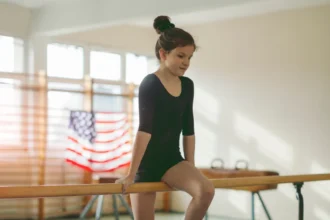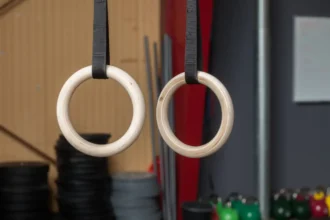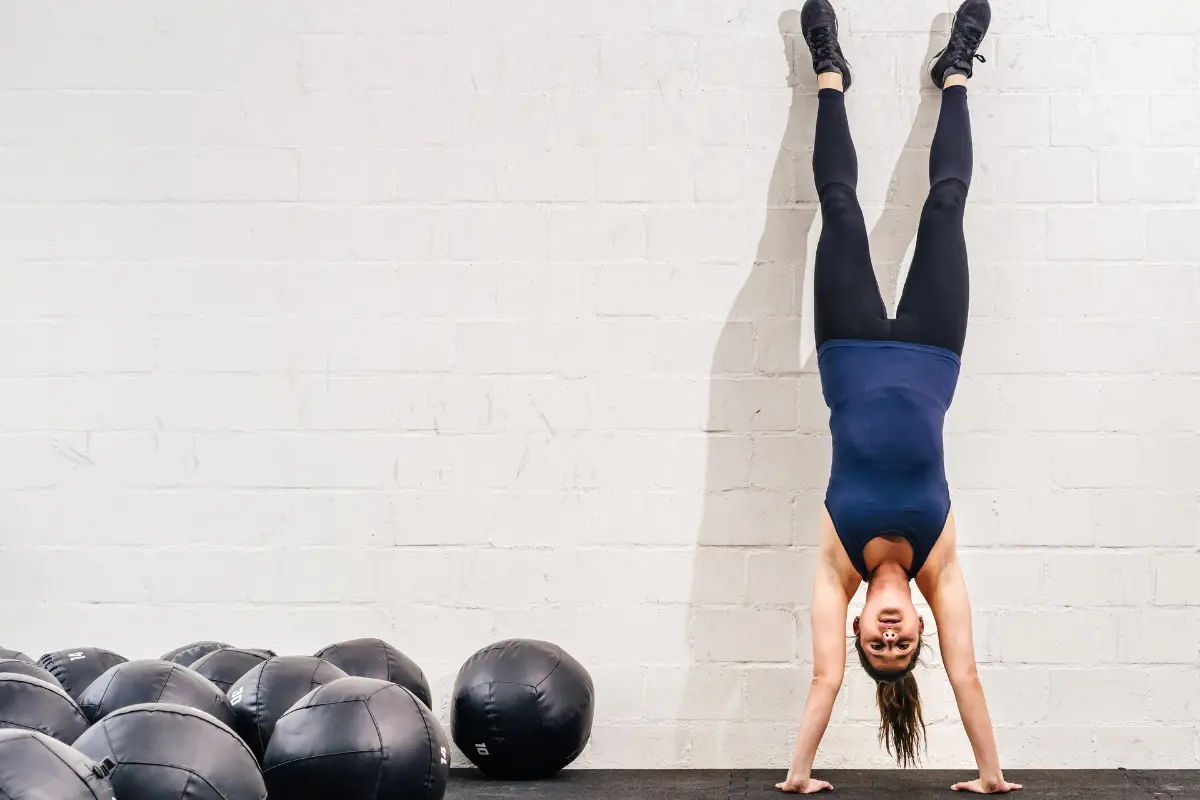Learning to kick up is essential for anyone wanting to master handstands. Using the wall as a training tool can boost your confidence and stability. In this guide, we’ll walk you through the steps to nail a kick-up into a wall handstand, with tips and strategies to help you progress towards a steady, independent handstand.
The 3 Elements of Learning Handstands
The journey to a successful freestanding handstand revolves around three core elements:
- Body Line: This is all about maintaining a straight handstand by aligning your body efficiently. A proper body line involves keeping your shoulders, hips, and legs straight, minimizing energy expenditure and maximizing stability.
- Balance: Developing the ability to control your center of mass and maintain stability is crucial. This often starts with practicing against a wall, where you learn to create and control balance points.
- Entry: Getting into the handstand position, such as through a kick up, a jump, or a press. A smooth entry sets the foundation for a stable handstand.
What is a Handstand Kick Up?
While there are various methods to enter a handstand, the kick up is the most fundamental and widely used technique. It involves transitioning from a standing position into a handstand by kicking one leg upward, followed by the other.
The key to a successful entry is generating the right amount of momentum and maintaining control throughout the movement.
The Importance of Wall-Assisted Handstand Kick Up
The wall-assisted handstand kick up is an essential drill that helps you build the skills needed for a freestanding handstand. Learning to kick up into a handstand using a wall as support offers several key benefits, especially for beginners.
1. Provide Stability and Safety
The wall gives you a stable surface to practice kick-ups without worrying about falling. This lowers the risk of injury and boosts confidence, especially for beginners who might be scared of being upside down.
2. Build Strength Gradually
Using the wall helps you strengthen your shoulders, arms, and core at a comfortable pace. You can focus on holding the handstand longer and gradually make your workouts harder as your muscles get stronger.
3. Improve Alignment
Practicing against the wall helps you learn and maintain the right body alignment. When your back touches the wall, you can tell if you’re straight, helping you correct any misalignments. This body awareness is key when moving to freestanding handstands.
4. Develop Balance
The wall acts as a guide for balancing in a controlled way. By practicing the right kick-up force, you learn to fine-tune your movements to find and keep balance, which is important for freestanding handstands.
5. Enhances Core Stability
Holding a handstand against the wall requires a lot of core engagement. This not only strengthens your core muscles but also teaches you how to use them to stabilize your body while upside down.
6. Offers a Safe Environment for Progression
The wall offers a safety net, making it easier to try new techniques and push your limits without the fear of falling. As you get more comfortable, you can slowly move away from the wall, reducing your reliance on it and preparing for freestanding handstands.
Split-Leg Kick Up: A Detailed Breakdown
The split-leg drill allows for a more gradual and controlled ascent into the handstand, making it ideal for beginners and those looking to refine their technique. Here’s a detailed breakdown:
Starting Position
1) Find Your Distance: Begin by positioning yourself at a comfortable distance from the wall. The closer you are, the easier it will be to control the kick-up. As you improve, you can increase the distance to better simulate a freestanding handstand.
2) Lunge Stance: Place your hands shoulder-width apart on the ground, a few inches from the wall. Spread your fingers wide to provide a solid base of support. Position one foot forward in a lunge stance, with the other foot slightly back.
3) Stable Hand Placement: Ensure your hands are firmly planted on the ground, with fingers spread wide. This provides stability and helps with balance.
4) Shoulder Engagement: Engage your shoulders by pressing them away from your ears and maintaining a slight bend in your elbows to absorb impact.
Initiate the Kick
1) Bend the Front Knee: From the lunge position, bend your front knee to create a spring-like effect.
2) Drive the Back Leg: Simultaneously, kick your back leg up towards the wall. This leg will lead the movement and generate the momentum needed to lift your body.
3) Push Off with Front Leg: Use the strength in your front leg to push off the ground, driving your body upward.
4) Core Activation: As your legs rise, engage your core muscles to maintain stability and control. A strong core helps keep your body aligned and prevents arching.
5) Straight Body Line: Focus on keeping a straight line from your hands to your feet. Avoid arching your back or letting your legs sag.
Finding Balance
1) Gentle Wall Contact: Aim for your leading leg to make gentle contact with the wall. This should be a light touch, not a hard hit. Think of the wall as a guide rather than a crutch.
2) Split Position Hold: Hold the split position momentarily. This position helps you gauge your balance and the force of your kick.
3) Hand Adjustments: Make small adjustments with your hands and fingers to find your balance point. You didn’t kick hard enough if you fall back onto your feet. If you hit the wall too hard, you kicked too hard.
Bringing Legs Together
1) Controlled Leg Movement: Slowly bring your legs together once you have balanced in the split position. This should be a controlled movement to prevent losing balance.
2) Align Your Legs: Ensure your legs are straight and your toes are pointed. This alignment helps maintain the straight body line necessary for a stable handstand.
Holding the Handstand
1) Maintain Core Engagement: Keep your core tight and engaged to maintain the handstand position.
2) Focus on Stability: Use your fingers and hands to make small adjustments and maintain balance. Focus on keeping your body aligned and steady.
Increasing Distance from the Wall
Gradually increasing your distance from the wall is key to moving from a wall-assisted handstand to a freestanding one. Each time you kick up, focus on minimizing contact with the wall.
As you increase the distance, you must make finer adjustments to maintain your balance. Engage your core and use your fingers for small corrections. Set aside 20-30 minutes for focused practice. During this time, analyze your technique, make adjustments, and ensure you’re not kicking too hard or too softly.
The ultimate goal is to reach a point where you can kick up and balance without touching the wall at all.





